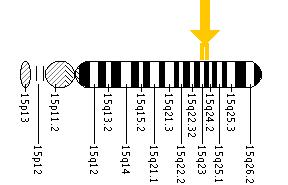مرض تاي-ساكس
| بقعة بحمرة الكرز كما تبدو في مرض تاي-ساكس: مركز النقرة يظهر باللون الأحمر الزاهي لأنه محاط بهالة حليبية. | |
| ICD-10 | E75.0 |
| ICD-9 | 330.1 |
| OMIM | 272800 272750 |
| DiseasesDB | 12916 |
| MedlinePlus | 001417 |
| eMedicine | ped/3016 |
| MeSH | D013661 |
مرض تاي-ساكس Tay-Sachs disease (ويُعرف أيضاً بإسم داء GM2 الگنگليوسيدي GM2 gangliosidosis أو نقص هكسوسامينيديز أ hexosaminidase A deficiency) هو اختلال وراثي يحدث بين الأطفال الذين ينحدر أسلافهم من شرق أوروبا ويتسبب في تلف بالدماغ. وينتج عنه كبر حجم الرأس والارتعاش والعمى والصمم، وفقدان القدرة والحيوية وأخيرا الموت. والمصابون بهذا المرض تظهر في شبكية عيونهم نقطة حمراء. وتظهر أعراض المرض على المصاب وعمره ستة أشهر. ولايوجد علاج لهذا المرض حتى الآن، ومعظم ضحاياه يعيشون فقط لثلاث أو أربع سنوات.

يصيب مرض تاي-ساكس الأطفال الذين يقل لديهم إنزيم هكسوسامينيداز (أ)، وهذا الإنزيم يقوم بالتحكم في كمية الغنغليوزيد التي تتراكم في خلايا الأعصاب. والگنگليوزيد من الشحوم التي ينتجها التطور الطبيعي للخلايا. وتصاب خلايا الأعصاب التي تخزن كميات أكبر من اللازم منه، بالتورم وتموت أخيرا. ويتسبب كِبَر عدد خلايا الأعصاب المعطوبة أو الميتة في الإضرار بالدماغ. وأول من تعرف على علامات مرض تاي-ساكس هما الطبيبان وارن تاي من بريطانيا وبرنارد ساكس من الولايات المتحدة. وكان ذلك في الثمانينيات من القرن التاسع عشر. وفي عام 1969 اكتشف الباحثون أن نقص إنزيم الهكسوسامينيديز (أ) هو المسبب للمرض. وفي الوقت الحاضر يستخدم العلماء أنواعًا من الاختبارات لتحديد فعالية إنزيم هكسوسامينيداز (أ) في عينات الدم والأنسجة المختلفة. وهذه الاختبارات تمكِّن من الإفصاح عما إذا كان الأطفال، وهم لايزالون في بطون أمهاتهم، يحملون مرض تاي-ساكس. كما أن الاختبارات توضح أيضًا ما إذا كان البالغون ناقلين للمرض. وناقلو المرض أنفسهم غير مصابين به، غير أنه إذا كان الزوجان كلاهما من ناقلي المرض فإن أطفالهما ربما يرثون منهما المرض.
. . . . . . . . . . . . . . . . . . . . . . . . . . . . . . . . . . . . . . . . . . . . . . . . . . . . . . . . . . . . . . . . . . . . . . . . . . . . . . . . . . . . . . . . . . . . . . . . . . . . . . . . . . . . . . . . . . . . . . . . . . . . . . . . . . . . . . . . . . . . . . . . . . . . . . . . . . . . . . . . . . . . . . . .
علم الوراثة
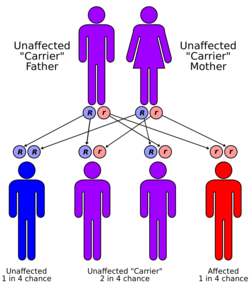
Tay–Sachs disease is an autosomal recessive genetic disorder, meaning that when both parents are carriers there is a 25% risk of giving birth to an affected child with each pregnancy. The affected child would have received a mutated copy of the gene from each parent.[1]
الانتشار
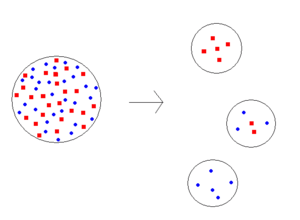
اليهود الاشكناز ينتشر بينهم مرض تاي-ساكس وأمراض تخزين دهون أخرى. في الولايات المتحدة، نحو 1 من 27 إلى 1 من 30 من اليهود الاشكناز هو ناقل متنحي. نسبة وقوع المرض هي نحو 1 في كل 3,500 حديث الولادة بين اليهود الاشكناز.[2] الكنديون الفرنسيون ومجتمع الكيجن في لويزيانا لديها تواجد مماثل لذلك في اليهود الاشكناز. الأمريكان الأيرلنديون لديهم فرصة 1 في 50 لأن يكونوا ناقلين. وفي العموم الشعب، فإن نسبة تواجد الناقلين كزايگوتات متغايرة الألائل heterozygotes هي نحو 1 من 300.[3] تواجد المرض يبلغ نحو 1 في 320,000 من حديثي الولادة في الشعب بالولايات المتحدة.[4]
Three general classes of theories have been proposed to explain the high frequency of Tay–Sachs carriers in the Ashkenazi Jewish population:
- Heterozygote advantage.[5] When applied to a particular allele, this theory posits that mutation carriers have a selective advantage, perhaps in a particular environment.[6][7]
- Reproductive compensation. Parents who lose a child because of disease tend to "compensate" by having additional children to replace them. This phenomenon may maintain and possibly even increase the incidence of autosomal recessive disease.[8]
- Founder effect. This hypothesis states that the high incidence of the 1278insTATC chromosomes[6] is the result of an elevated allele frequency[5] that existed by chance in an early founder population.[6]
Tay–Sachs disease was one of the first genetic disorders for which epidemiology was studied using molecular data. Studies of Tay–Sachs mutations using new molecular techniques such as linkage disequilibrium and coalescence analysis has brought an emerging consensus among researchers supporting the founder effect theory.[6][9][10]
التاريخ
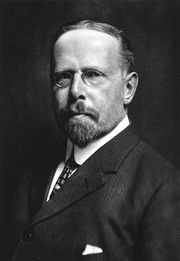
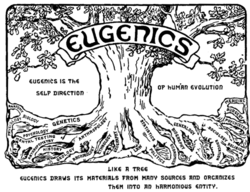
المصادر
المراجع
- ^ خطأ استشهاد: وسم
<ref>غير صحيح؛ لا نص تم توفيره للمراجع المسماةNINDS - ^ PMID 11500789 (PubMed)
Citation will be completed automatically in a few minutes. Jump the queue or expand by hand - ^ خطأ استشهاد: وسم
<ref>غير صحيح؛ لا نص تم توفيره للمراجع المسماةomimtaysachs - ^ GM2 Gangliosidoses - Introduction And Epidemiology at Medscape. Author: David H Tegay. Updated: Mar 9, 2012
- ^ أ ب Chakravarti, A; Chakraborty, R (1978). "Elevated frequency of Tay–Sachs disease among Ashkenazic Jews unlikely by genetic drift alone". American Journal of Human Genetics. 30 (3): 256–261. PMC 1685578. PMID 677122.
- ^ أ ب ت ث Frisch, Amos; Colombo, Roberto; Michaelovsky, Elena; Karpati, Mazal; Goldman, Boleslaw; Peleg, Leah (2004). "Origin and spread of the 1278insTATC mutation causing Tay–Sachs disease in Ashkenazi Jews: Genetic drift as a robust and parsimonious hypothesis". Human Genetics. 114 (4): 366–376. doi:10.1007/s00439-003-1072-8. PMID 14727180.
{{cite journal}}: Unknown parameter|month=ignored (help) - ^ Tay-Sachs and French Canadians: A Case of Gene-Culture Co-evolution?, Advances in Anthropology, Vol.2 No.3, August 2012, doi:10.4236/aa.2012.23016
- ^ Koeslag, J H; Schach, S R (1984). "Tay–Sachs disease and the role of reproductive compensation in the maintenance of ethnic variations in the incidence of autosomal recessive disease". Annals of Human Genetics. 48 (3): 275–281. doi:10.1111/j.1469-1809.1984.tb01025.x. PMID 6465844.
- ^ Risch, N; Tang, H; Katzenstein, H; Ekstein, J (2003). "Geographic Distribution of Disease Mutations in the Ashkenazi Jewish Population Supports Genetic Drift over Selection". American Journal of Human Genetics. 72 (4): 812–822. doi:10.1086/373882. PMC 1180346. PMID 12612865.
- ^ Slatkin, M (2004). "A Population-Genetic Test of Founder Effects and Implications for Ashkenazi Jewish Diseases". American Journal of Human Genetics. 75 (2): 282–293. doi:10.1086/423146. PMC 1216062. PMID 15208782.
وصلات خارجية
- National Tay-Sachs & Allied Diseases Association
- NINDS Tay-Sachs Disease Information Page
- tay-sachs.org
- Tay-Sachs disease at NLM Genetics Home Reference
- Tay-Sachs on NCBI
- Cure Tay Sachs Foundation
- Hide & Seek Foundation for Lysosomal Disease Research
- The Project Charity - The Children's Rare Disease Network: support and resources for families and children suffering from rare disease


